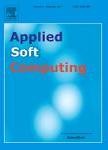版权所有:内蒙古大学图书馆 技术提供:维普资讯• 智图
内蒙古自治区呼和浩特市赛罕区大学西街235号 邮编: 010021

作者机构:Univ Auckland Fac Business & Econ Business Sch Dept Informat Syst & Operat Management Auckland 1010 New Zealand Ryerson Univ Dept Mech & Ind Engn Toronto ON Canada Univ Jaen Dept Comp Sci Campus Las Lagunillas S-N Jaen 23071 Spain Univ Granada Andalusian Res Inst Data Sci & Computat Intellige Granada 18071 Spain Vilnius Gediminas Tech Univ Inst Sustainable Construct LT-10223 Vilnius Lithuania
出 版 物:《APPLIED SOFT COMPUTING》 (应用软计算)
年 卷 期:2020年第95卷
页 面:106508-106508页
核心收录:
学科分类:08[工学] 0812[工学-计算机科学与技术(可授工学、理学学位)]
基 金:FEDER Spain funds provided in the National Spanish projects [PID2019-103880RB-I00 PGC2018-099402-B-I00]
主 题:Phase change material (PCM) Material selection Interval numbers Best-worst method (BWM) Target-based COmbined COmpromise SOlution (T-coCoSo) Target-based multi-objective optimization of ratio analysis plus the full multiplicative form (T-MULTIMOORA)
摘 要:The move towards sustainable development and energy efficient solutions in the built environment has led to develop innovative solutions, particularly in the area of indoor environmental comfort in buildings. Phase change materials (PCMs) are a potential approach to target building energy use reduction. PCMs are smart materials that have been commercialized and used in buildings for effective regulation of surface and indoor air temperature fluctuations and peak energy reductions. Appropriate PCM selection is the critical step in PCM system design that determines the full effectiveness and applicability of PCM integrated building applications. Optimal selection of PCMs can be effectively executed with the support of multiple attribute decision making (MADM) approaches. Although, the traditional MADM methods have usually focused on beneficial and non-beneficial attributes, in real-world and practical problems, decision-makers tend to determine the rank of an optimal alternative based on the target values of their attributes. In response to the knowledge gap of an existing practical and functional PCM selection solution, this study proposed a hybrid and novel target-based MADM approach that combines the best-worst method (BWM) with COmbined COmpromise SOlution (CoCoSo) and multi-objective optimization of ratio analysis plus the full multiplicative form (MULTIMOORA) with an interval-valued structure called the IV-T-BWM-CoCoMULTIMOORA approach. A case study is examined to select the optimal PCM for interior building surface applications based on a case-specific construction project in Toronto, Canada. Two separate scenarios are considered, one based on thermophysical specifications and one based on managerial preferences. The connection between both technical and managerial criteria was demonstrated to clearly affect the decision-making process to take into account both thermophysical properties of PCM alternatives in the context of risk factors and design consideration